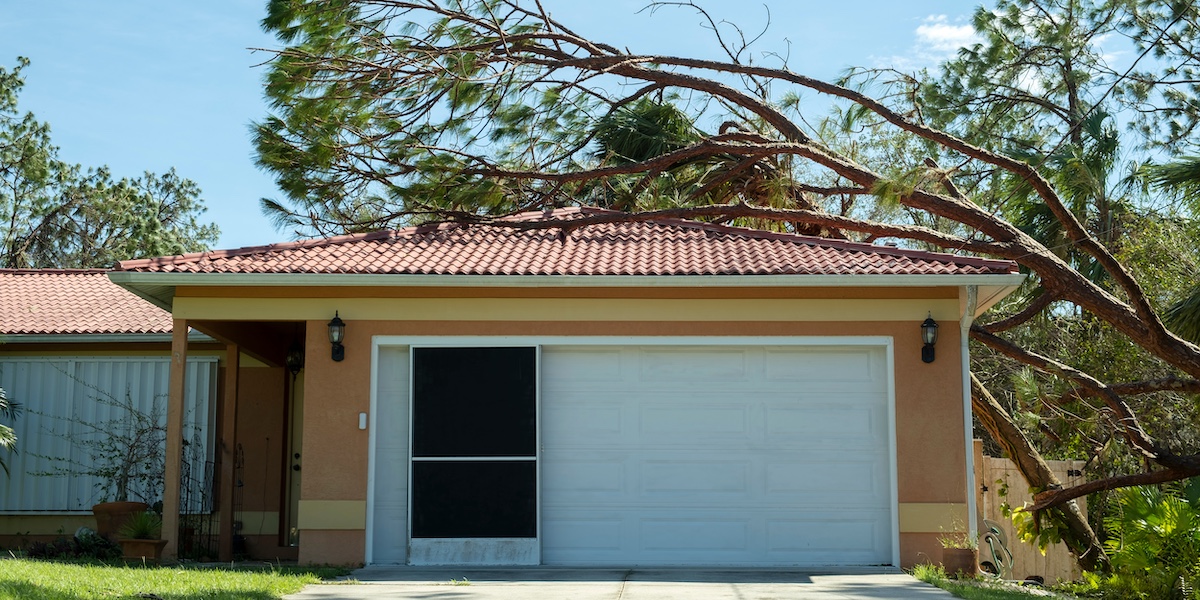When the Wind Blows: What Happens If Your Tree Falls on a Neighbor’s House?

It was a quiet Sunday afternoon when the storm rolled in. Winds picked up, the sky darkened, and within minutes, the towering oak in Jason's backyard was leaning. Before he could process what was happening, the tree came crashing down - not into his own yard, but straight through his neighbor’s roof.
The next day, Jason was flooded with questions. Was he responsible? Would his insurance cover the damage? Should he be expecting a lawsuit from next door?
If you’ve ever worried about this scenario, or been through it, you’re not alone.
Who Pays for the Damage?
Here’s the general rule: If a healthy tree falls due to an "act of God" such as a storm, strong winds, or lightning, then the neighbor's own homeowners insurance is typically responsible for covering the damage. This falls under the neighbor’s policy as a property damage claim caused by a covered peril, such as a windstorm.
So in Jason’s case, assuming the tree was well-maintained and not diseased or dead, his neighbor’s insurance policy would respond under the dwelling coverage section to pay for the repairs. If the tree happened to damage a car in the driveway, the neighbor’s auto policy (under comprehensive coverage) would respond there.
But What If the Tree Was Neglected?
This is where things change. If the tree was clearly dead, dying, or diseased, and the owner knew or should have known it posed a danger, then the responsibility may shift. If your neighbor can prove negligence (e.g., they warned you about the tree, or you ignored a recommendation to remove it), then your liability coverage under your homeowners policy could be triggered.
In such cases, your insurer may step in under personal liability coverage to pay for the damage and even legal fees if a lawsuit arises.
What about Cleanup?
Most homeowners policies include limited coverage for tree removal, typically from $500 to $1,000, but only if the tree damages a covered structure. If it falls in the yard without hitting anything, removal might not be covered at all, regardless of whose tree it is.
How to Avoid Trouble
To avoid unwanted surprises:
- Regularly inspect and maintain your trees.
- Remove dead or unstable trees promptly.
- Document any communication with neighbors about hazardous trees.
The Bottom Line
If a healthy tree falls during a storm, your neighbor’s insurance would usually handle the damage. But if you’ve neglected a known risk, your liability coverage could come into play. When in doubt, contact our office and, as a best practice, check on those trees before the next storm rolls through.
Featured Blogs
- Top 10 U.S. Roadside Attractions to Visit this Summer
- Term Life Insurance vs. Accidental Death and Dismemberment: What’s the Difference?
- Bikes, Kayaks, and Rooftop Gear: What Your Insurance Covers
- How to Obtain an International Driving License and Why You Might Need One
- ER, Urgent Care, or Virtual Visit? Where to Go and What It’ll Cost You
- What Is PIP Insurance—and Why It Matters to You
- Walk First, Wander Later: The Travel Hack You’ll Wish You’d Known Sooner
- Are E-Bikes Considered Motorized Vehicles for Insurance or Registration?
- Key Man Insurance Explained: Coverage, Structure, and Tax Implications
- Understanding Term Life Insurance Convertibility: Your Future Self May Thank You
- Rip Tides: What They Are, How to Spot Them, and What to Do If You're Caught in One
- When the Wind Blows: What Happens If Your Tree Falls on a Neighbor’s House?
- Boat Insurance Basics: Why Proper Coverage Is a Must for Every Boat Owner
- Understanding Roadside Assistance: Is It Worth the Extra Premium?
- The Benefits of Visiting Your Farmers Market this Summer
- Carpooling to Sports Events this Summer? Make Sure Your Insurance is on Board
- Concierge Medical Care: A New Way To Better Health
- Safe Travels: How to Prepare Your Family for an International Vacation
- Ocean, Lakes, and Pools, Oh My! Tips for a Safe Summer Around Water
- Understanding the EOB: What Is It and Why Should You Care?
- Power Outage Playbook: What Your Insurance Might
- Why Your Dentist Might Be Your Most Important Healthcare Provider
- When Life Happens: Building a Family Emergency Plan that Actually Works
- Big Brother in the Dashboard: The Truth about Telematics Devices
- Would You Bet $7,000 on Your Health This Year?
- Breathe Easy: The Surprising Benefits of Houseplants in Your Home
- Hidden Protection: Homeowners Coverage You May Not Know You Need
- Understanding the Unique Challenge